Abstract
Experimental observations on thermal injury and death of bacteria in the stationary phase can be explained by assuming that death results from inactivation of (XL) of N critical sites. It is assumed: (i) that inactivation of individual sites occurs at random and follows first-order kinetics, (ii) that the critical sites are identical and of equal heat resistance, and (iii) the bacterial population is homogeneous in heat resistance. A method is described for calculating k (the rate constant for inactivation of individual sites), N (sites per cell), and XL (the number which must be inactivated to cause death under the experimental conditions used) from experimental data. Theoretical curves calculated by using this model are identical with experimental curves, providing support for the assumptions used. Calculated values of N and XL were 130 and 21.7 for Pseudomonas viscosa and 175 and 2.7 for Salmonella anatum. There is considerable uncertainty in the absolute values of N, but they are probably > 100. It is predicted that XL will vary depending on the recovery medium used after heating. This theory is consistent with all experimental observations on thermal injury and death of bacteria.
Full text
PDF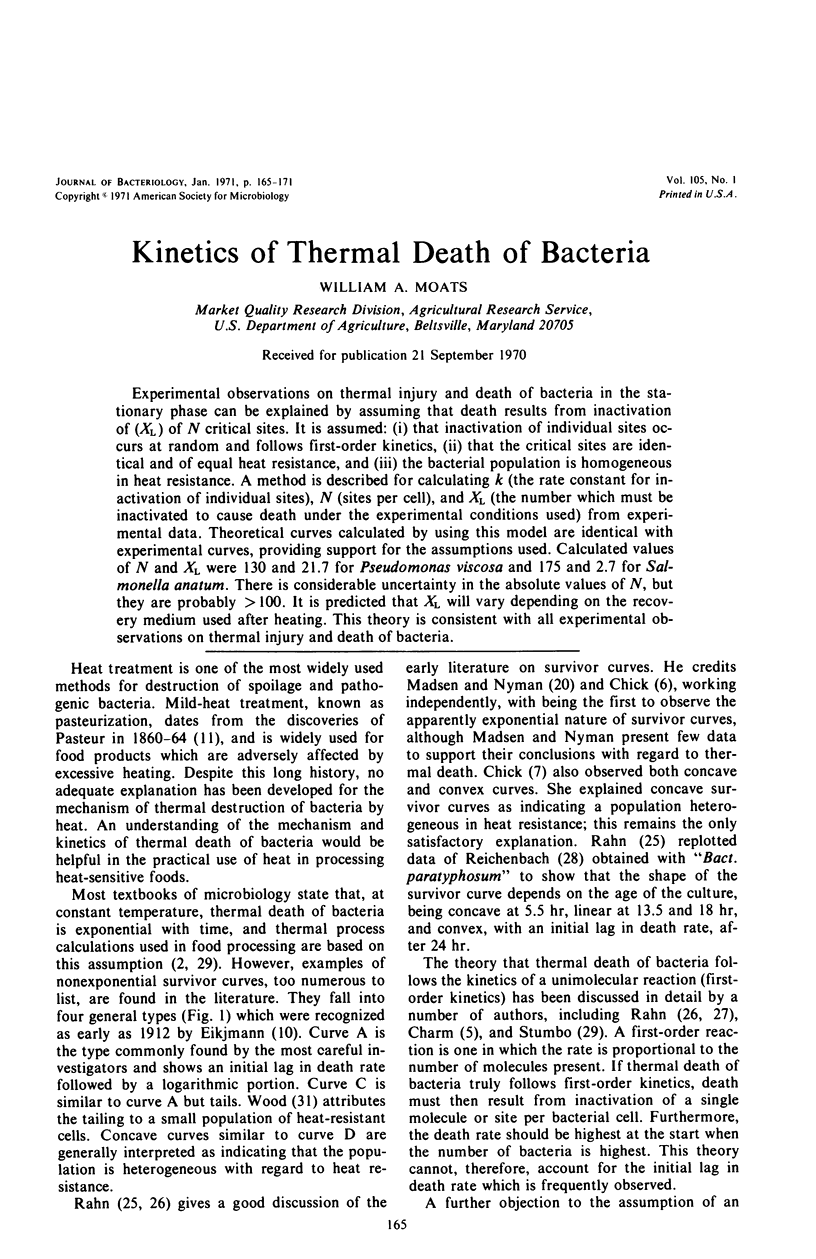
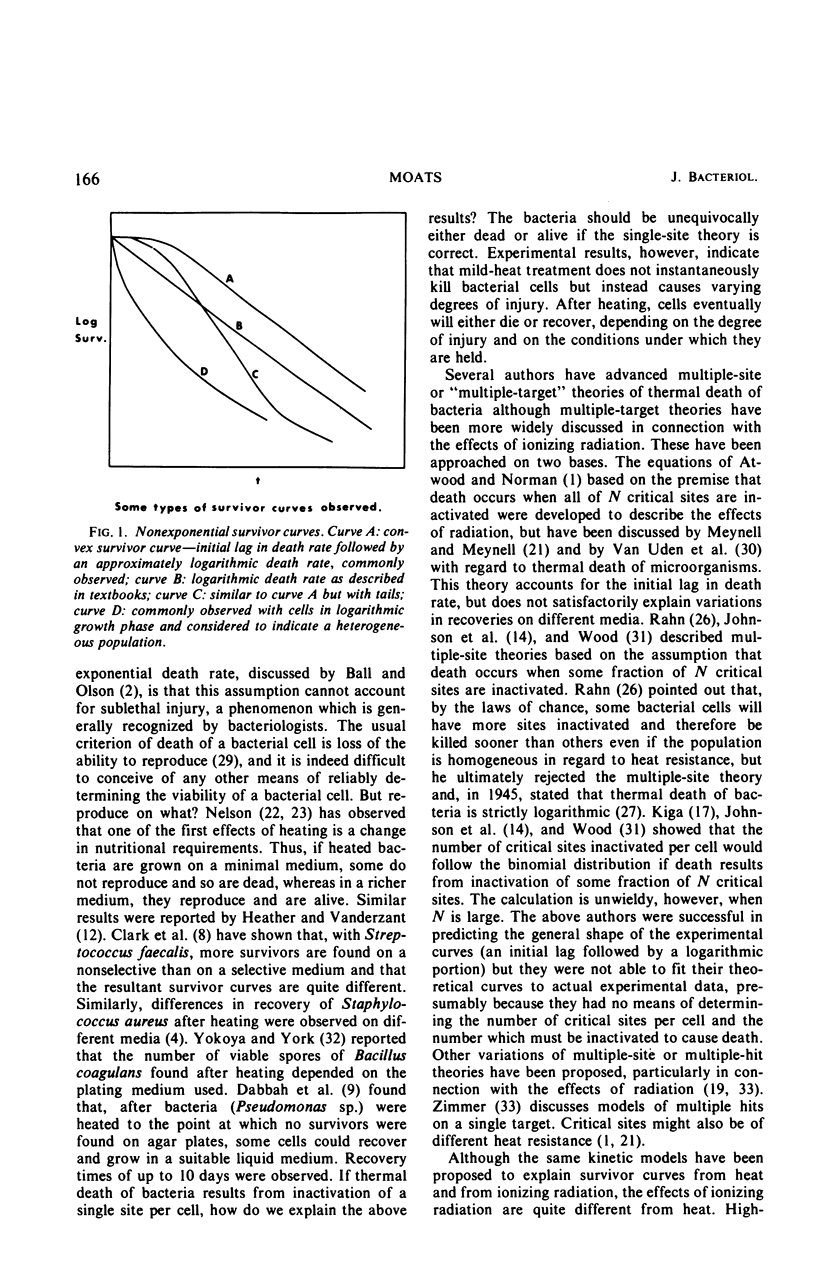
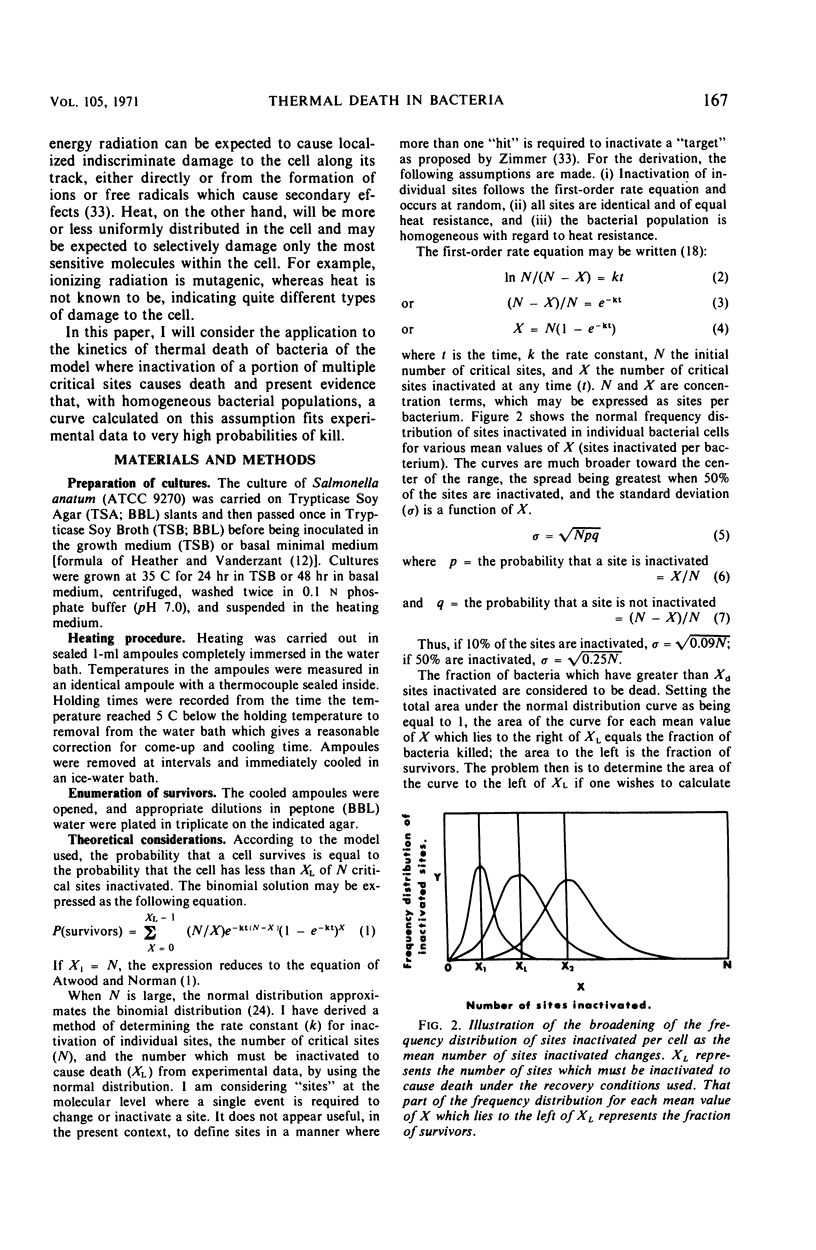
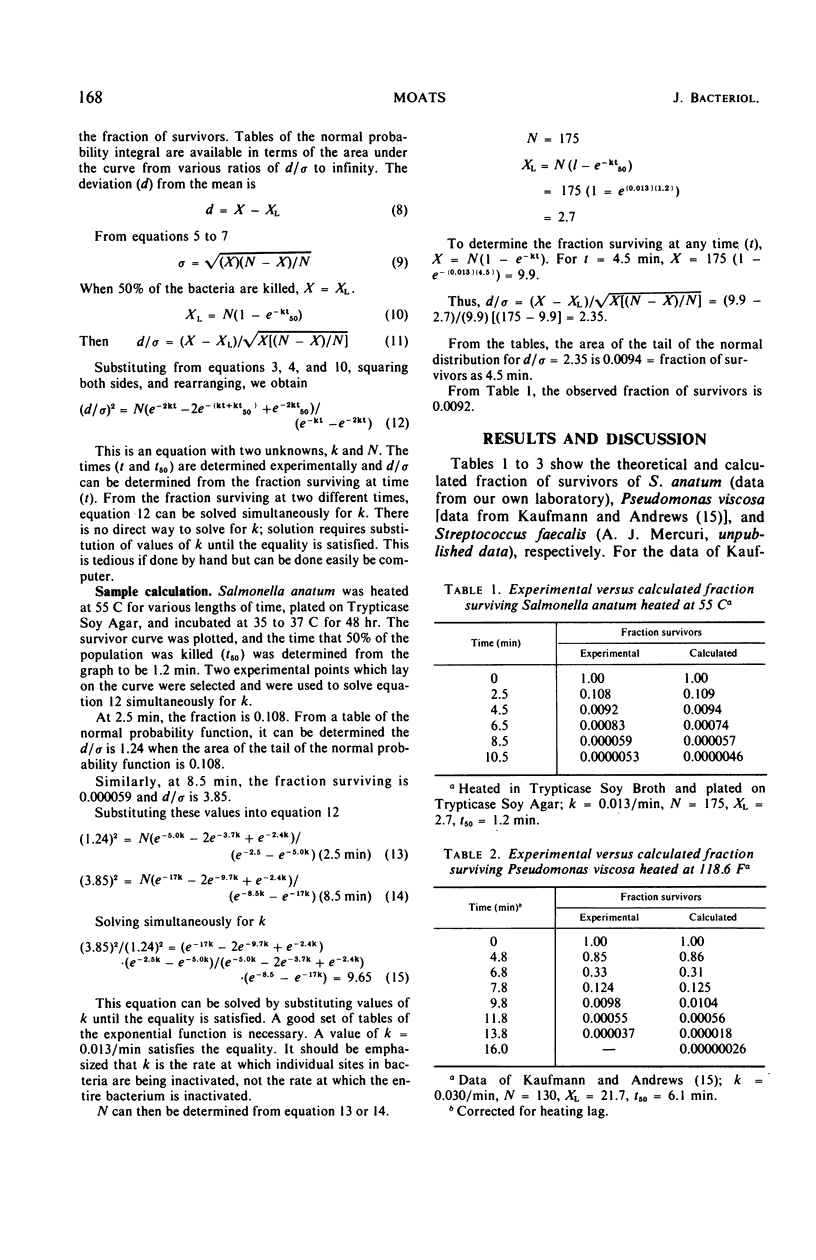
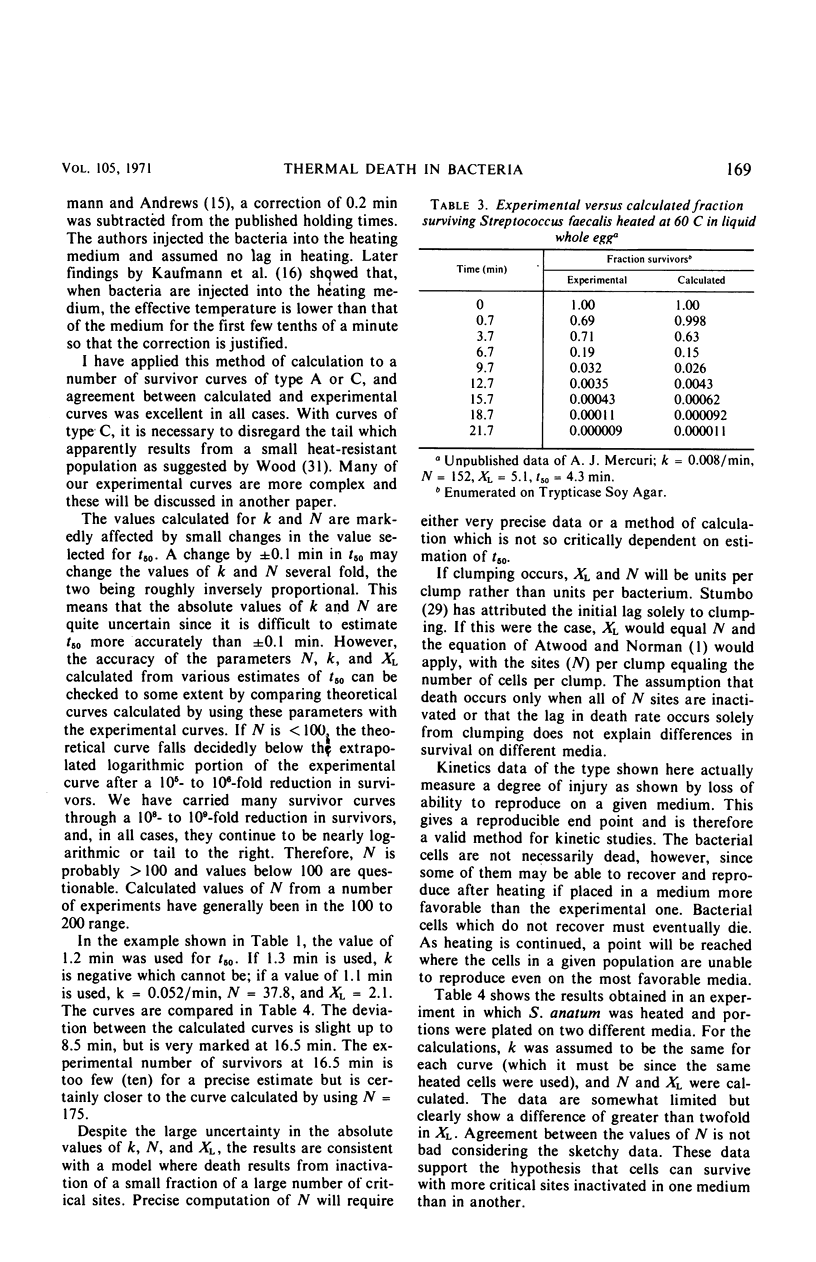
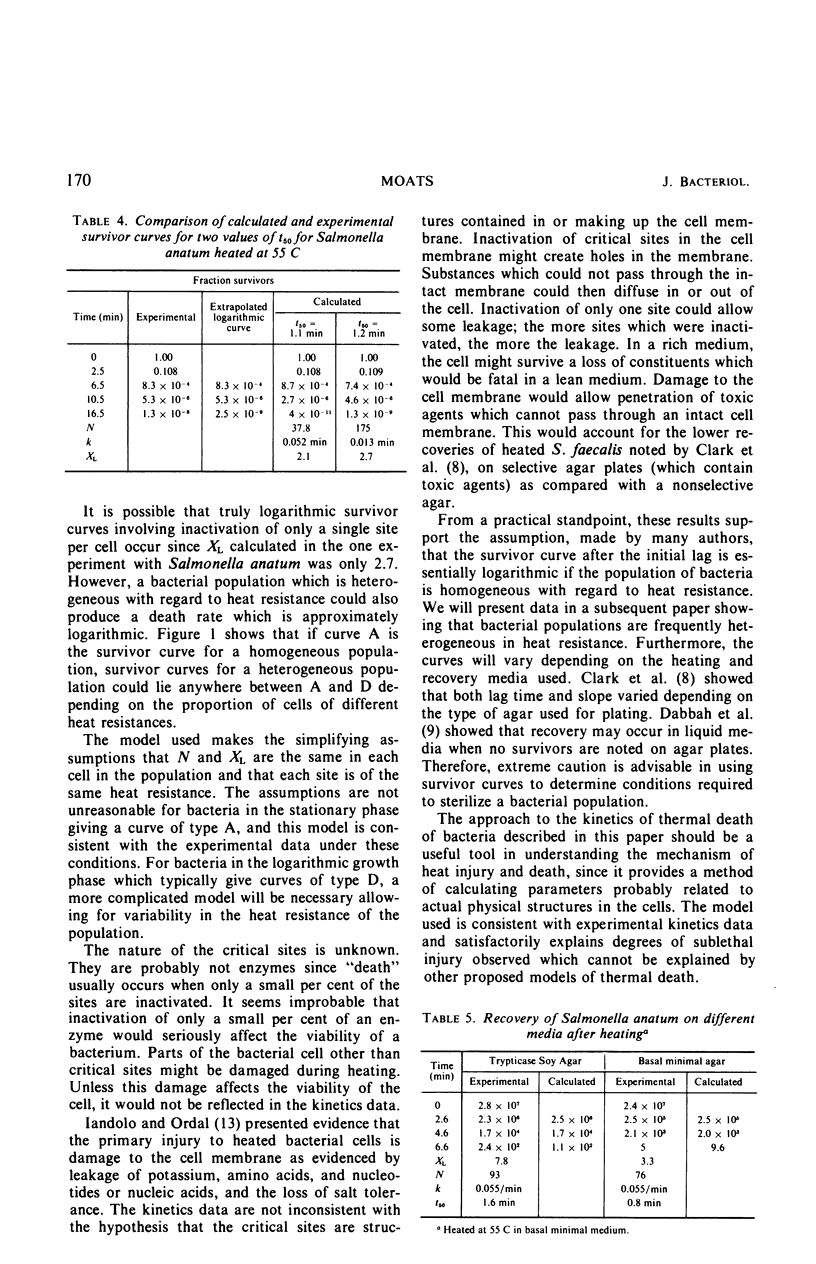
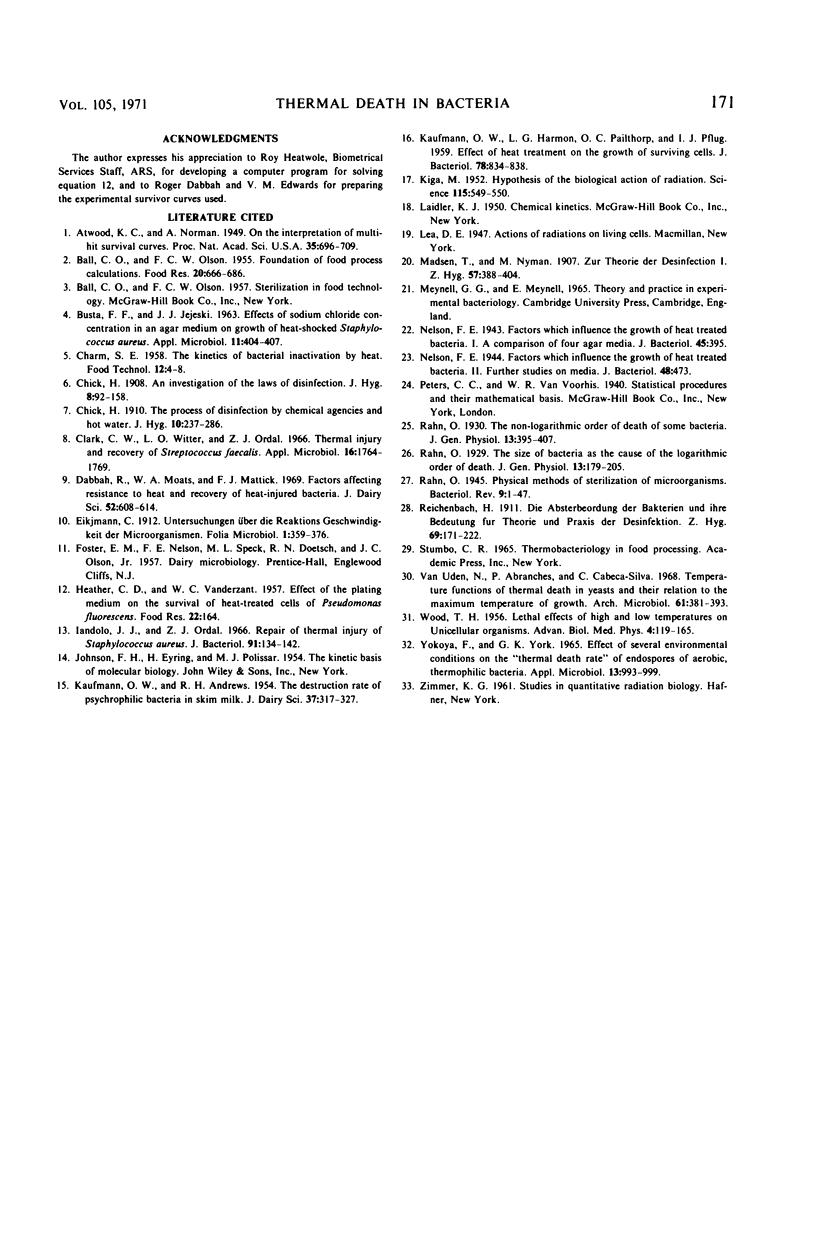
Selected References
These references are in PubMed. This may not be the complete list of references from this article.
- Atwood K. C., Norman A. On the Interpretation of Multi-Hit Survival Curves. Proc Natl Acad Sci U S A. 1949 Dec;35(12):696–709. doi: 10.1073/pnas.35.12.696. [DOI] [PMC free article] [PubMed] [Google Scholar]
- BUSTA F. F., JEZESKI J. J. EFFECT OF SODIUM CHLORIDE CONCENTRATION IN AN AGAR MEDIUM ON GROWTH OF HEAT-SHOCKED STAPHYLOCOCCUS AUREUS. Appl Microbiol. 1963 Sep;11:404–407. doi: 10.1128/am.11.5.404-407.1963. [DOI] [PMC free article] [PubMed] [Google Scholar]
- Clark C. W., Witter L. D., Ordal Z. J. Thermal injury and recovery of Streptococcus faecalis. Appl Microbiol. 1968 Nov;16(11):1764–1769. doi: 10.1128/am.16.11.1764-1769.1968. [DOI] [PMC free article] [PubMed] [Google Scholar]
- Dabbah R., Moats W. A., Mattick J. F. Factors affecting resistance to heat and recovery of heat-injuried bacteria. J Dairy Sci. 1969 May;52(5):608–614. doi: 10.3168/jds.s0022-0302(69)86615-4. [DOI] [PubMed] [Google Scholar]
- Iandolo J. J., Ordal Z. J. Repair of thermal injury of Staphylococcus aureus. J Bacteriol. 1966 Jan;91(1):134–142. doi: 10.1128/jb.91.1.134-142.1966. [DOI] [PMC free article] [PubMed] [Google Scholar]
- KAUFMANN O. W., HARMON L. G., PAIL THORP O. C., PFLUG I. J. Effect of heat treatment on the growth of surviving cells. J Bacteriol. 1959 Dec;78:834–838. doi: 10.1128/jb.78.6.834-838.1959. [DOI] [PMC free article] [PubMed] [Google Scholar]
- Kiga M. Hypothesis of the Biological Action of Radiation. Science. 1952 May 16;115(2994):549–550. doi: 10.1126/science.115.2994.549. [DOI] [PubMed] [Google Scholar]
- Nelson F. E. Factors Which Influence the Growth of Heat-treated Bacteria: II. Further Studies on Media. J Bacteriol. 1944 Oct;48(4):473–477. doi: 10.1128/jb.48.4.473-477.1944. [DOI] [PMC free article] [PubMed] [Google Scholar]
- Nelson F. E. Factors which Influence the Growth of Heat-treated Bacteria: I. A Comparison of Four Agar Media. J Bacteriol. 1943 Apr;45(4):395–403. doi: 10.1128/jb.45.4.395-403.1943. [DOI] [PMC free article] [PubMed] [Google Scholar]
- Rahn O. PHYSICAL METHODS OF STERILIZATION OF MICROORGANISMS. Bacteriol Rev. 1945 Mar;9(1):1–47. doi: 10.1128/br.9.1.1-47.1945_1. [DOI] [PMC free article] [PubMed] [Google Scholar]
- WOOD T. H. Lethal effects of high and low temperatures on unicellular organisms. Adv Biol Med Phys. 1956;4:119–165. doi: 10.1016/b978-1-4832-3110-5.50008-x. [DOI] [PubMed] [Google Scholar]
- Yokoya F., York G. K. Effect of several environmental conditions on the "thermal death rate" of endospores of aerobic, thermophilic bacteria. Appl Microbiol. 1965 Nov;13(6):993–999. doi: 10.1128/am.13.6.993-999.1965. [DOI] [PMC free article] [PubMed] [Google Scholar]
- van Uden N., Abranches P., Cabeça-Silva C. Temperature functions of thermal death in yeasts and their relation to the maximum temperature for growth. Arch Mikrobiol. 1968;61(4):381–393. doi: 10.1007/BF00409674. [DOI] [PubMed] [Google Scholar]


